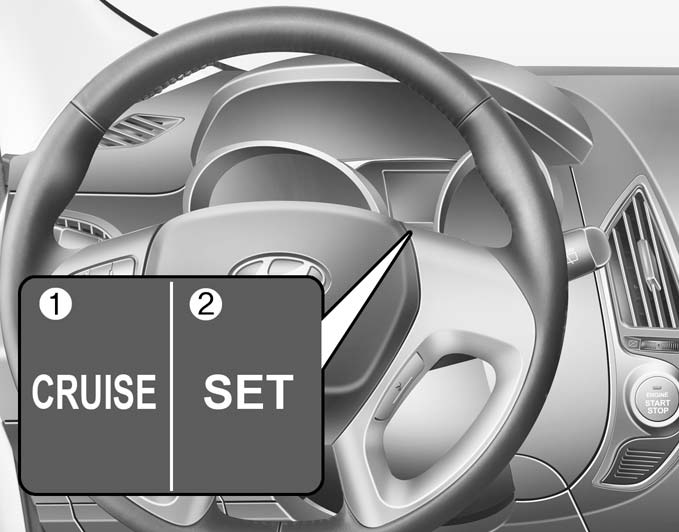Navigating the Road with Ease: A Deep Dive into the 2025 Hyundai Tucson’s Advanced Cruise Control System
Navigating the Road with Ease: A Deep Dive into the 2025 Hyundai Tucson’s Advanced Cruise Control System
Introduction
In this auspicious occasion, we are delighted to delve into the intriguing topic related to Navigating the Road with Ease: A Deep Dive into the 2025 Hyundai Tucson’s Advanced Cruise Control System. Let’s weave interesting information and offer fresh perspectives to the readers.
Table of Content
Navigating the Road with Ease: A Deep Dive into the 2025 Hyundai Tucson’s Advanced Cruise Control System

The 2025 Hyundai Tucson boasts a suite of advanced driver assistance systems (ADAS) designed to enhance safety and comfort during every journey. Among these features, the adaptive cruise control system stands out as a technological marvel, offering drivers an unparalleled level of convenience and peace of mind. This article explores the intricacies of this innovative system, highlighting its capabilities and the benefits it delivers to drivers.
Understanding Adaptive Cruise Control: More Than Just Maintaining Speed
Traditional cruise control systems maintain a constant speed set by the driver. However, the 2025 Hyundai Tucson’s adaptive cruise control takes this concept to a whole new level. Utilizing sophisticated sensors and software, it automatically adjusts the vehicle’s speed to maintain a safe distance from the car in front.
This system functions by employing a forward-facing radar sensor, often paired with a camera, to monitor the traffic ahead. The system then utilizes this data to calculate the appropriate distance to maintain, automatically braking and accelerating as needed to ensure a safe following distance.
Beyond Distance: Exploring the Full Potential of Adaptive Cruise Control
The 2025 Hyundai Tucson’s adaptive cruise control goes beyond simply maintaining a safe distance. It integrates seamlessly with other ADAS features, creating a comprehensive safety and comfort package.
- Lane Keeping Assist: This feature uses a camera to monitor lane markings and gently guides the vehicle back into its lane if it detects drifting. Combined with adaptive cruise control, it provides a more confident driving experience, especially during long highway journeys.
- Traffic Jam Assist: This feature automatically adjusts the vehicle’s speed in stop-and-go traffic, even bringing the vehicle to a complete stop and resuming driving when traffic flow resumes. This significantly reduces driver fatigue and stress, particularly in congested urban environments.
- Blind Spot Monitoring: This feature uses sensors to detect vehicles in the driver’s blind spots, alerting the driver with visual and auditory signals. When paired with adaptive cruise control, it provides an additional layer of safety, especially during lane changes.
The Benefits of Advanced Cruise Control: Enhancing Safety and Comfort
The 2025 Hyundai Tucson’s adaptive cruise control system offers a range of benefits that enhance both safety and comfort:
- Enhanced Safety: By automatically maintaining a safe following distance, the system significantly reduces the risk of rear-end collisions, a leading cause of traffic accidents.
- Reduced Driver Fatigue: The system takes over the task of accelerating and braking, allowing the driver to relax and focus on other aspects of driving, reducing fatigue and improving alertness.
- Improved Fuel Efficiency: By smoothly adjusting the vehicle’s speed, the system optimizes fuel consumption, reducing fuel costs and environmental impact.
- Enhanced Comfort: The system provides a more relaxed and enjoyable driving experience, especially on long journeys, by taking over the repetitive task of controlling the vehicle’s speed.
FAQs: Addressing Common Questions About Adaptive Cruise Control
Q: How does the system work in heavy traffic?
A: The 2025 Hyundai Tucson’s adaptive cruise control system is designed to function effectively in heavy traffic. It can bring the vehicle to a complete stop and resume driving automatically when the traffic flow resumes.
Q: Is adaptive cruise control safe?
A: Yes, adaptive cruise control is a safe technology when used correctly. It is designed to enhance safety by reducing the risk of accidents, especially in situations where driver fatigue or distraction may be a factor.
Q: Can I disable adaptive cruise control?
A: Yes, you can disable adaptive cruise control at any time by pressing a button on the steering wheel or using the system’s control panel.
Q: What are the limitations of adaptive cruise control?
A: Adaptive cruise control is not a substitute for attentive driving. It is important to remain aware of your surroundings and be prepared to take over control of the vehicle if necessary. The system may also struggle in certain situations, such as heavy rain, snow, or fog, or when following vehicles that are braking abruptly.
Tips for Using Adaptive Cruise Control Effectively:
- Familiarize yourself with the system’s settings and controls.
- Use adaptive cruise control only in situations where it is safe and appropriate.
- Be aware of the system’s limitations and be prepared to take over control of the vehicle if necessary.
- Maintain a safe following distance, even when using adaptive cruise control.
- Be alert to your surroundings and be prepared to react to unexpected situations.
Conclusion: A Game Changer in Automotive Technology
The 2025 Hyundai Tucson’s adaptive cruise control system represents a significant advancement in automotive technology, offering drivers an unparalleled level of convenience and safety. By seamlessly integrating with other ADAS features, it creates a comprehensive driving experience that is both enjoyable and stress-free. As technology continues to evolve, we can expect even more sophisticated and user-friendly adaptive cruise control systems to emerge, making driving safer and more comfortable for everyone.








Closure
Thus, we hope this article has provided valuable insights into Navigating the Road with Ease: A Deep Dive into the 2025 Hyundai Tucson’s Advanced Cruise Control System. We appreciate your attention to our article. See you in our next article!